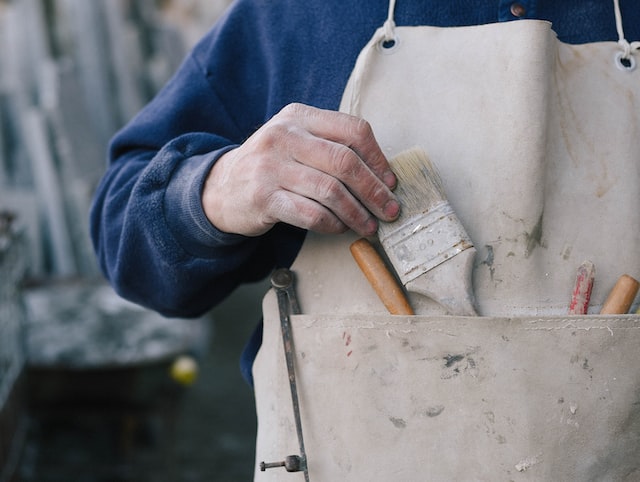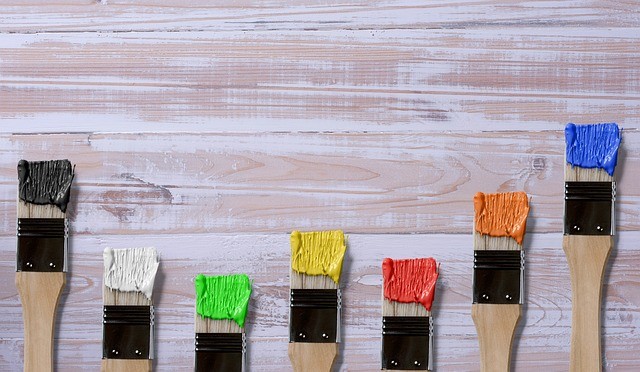If you’re wondering how to paint furniture without sanding or priming, there are several simple steps you can take. All you need are a few basic tools, and a little bit of practice. So let’s get started!
Preparing with a bonding primer
A bonding primer is a great way to prep a surface for painting. The process is simple. It helps to seal the surface and enables the paint to stick to it. Without a bonding primer, your paint may peel off, which is not a good look.

You can apply a bonding primer with a foam roller or an airless sprayer. Using a sprayer allows you to get a more smooth coat. Aerosol sprays are easy to use and are inexpensive. They are available in a wide range of colors.
There are also oil based primers. These are often better than water based primers because they are able to block odors and stain. Oil based primers are also more durable. But they require a bit more cleanup.
If you have an old piece of furniture that needs to be painted, it is important to prep it properly. Primers can be used on both interior and exterior surfaces. Unless the surface is sealed, you may notice a build-up of dust and dirt.
Applying a sealer
If you’re looking for a way to protect your painted furniture, you may want to consider applying a sealer. There are several types of sealers available, and depending on the finish you choose, you might be able to avoid sanding your furniture.
Before you get started, you should take care to read the directions on any product you plan on using. It’s a good idea to wear protective goggles if you’re sensitive to fumes. The sealer you use should be suitable for your particular wood species, and it should also be applied in the proper manner.
For best results, seal your wood with two coats of sealer. This helps to reduce the chance of warping, rotting, and stains. In addition, it makes the surface smoother, which can make it easier to paint on.
You can find a variety of top coat sealers, and some are more durable than others. Top coats typically have faster dry times, which will save you time during your project.
Using a liquid sandpaper
Liquid sandpaper can remove gloss from a surface without sanding or priming. This is a great alternative for paint jobs on polyurethane or lacquer surfaces. However, liquid sandpaper is dangerous and should be used with caution. You need to be aware of its fumes and chemicals, which can pollute waterways and cause health problems.

Before you use liquid sandpaper, make sure that the area is properly ventilated. Use protective gloves, a face mask, and solvent-resistant glasses or goggles. If you get too much of the solution in your eyes, you may experience blurry vision, dizziness, nausea, or even eye damage. It is also possible for the fumes to get on your skin, which can burn your skin.
In addition to these safety precautions, you should never use liquid sandpaper near pets, food, or children. The fumes can be harmful to the lungs. Also, if you accidentally inhale the solution, you should seek medical attention.
Whether you are using a spray-on or a sponge-based deglosser, the chemicals are strong and can cause serious harm if you inhale them. To avoid these risks, you should follow manufacturers’ instructions. They will show you how to use the product and ensure that you achieve the results you want.
Distressing
Distressing furniture is a great way to add character to your home decor. The process is simple and easy to do. You’ll only need a few basic tools to create a distressed effect on your furniture.
Before you start, you’ll need to prepare the piece. Start by removing any windows, doors, or other unnecessary materials. This will allow the wood to be seen under the paint. Next, you’ll want to use a putty knife or a scraper to remove the excess paint.
Once the furniture is thoroughly dried, you’ll want to apply a base color. You can use any kind of paint. But chalk paint tends to work better with distressed pieces. It is applied in layers and can create a very natural looking distressed effect.
If you want to add some additional depth to your piece, you’ll want to coat it with a water-based sealer. This will give the distressed wood a ‘weathered’ appearance.
Another option is to paint the wood and then add a layer of dark wax. Be careful to concentrate your wax in the corners.






